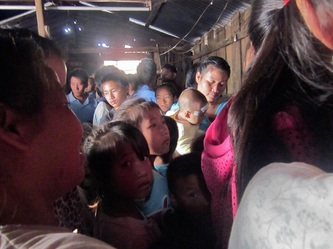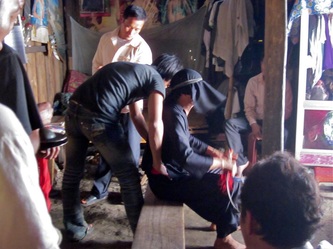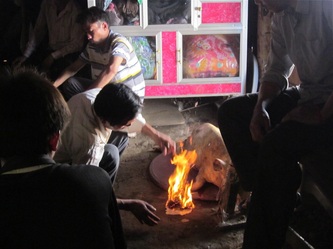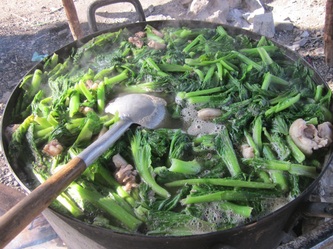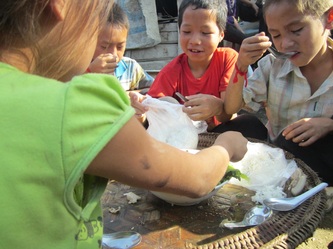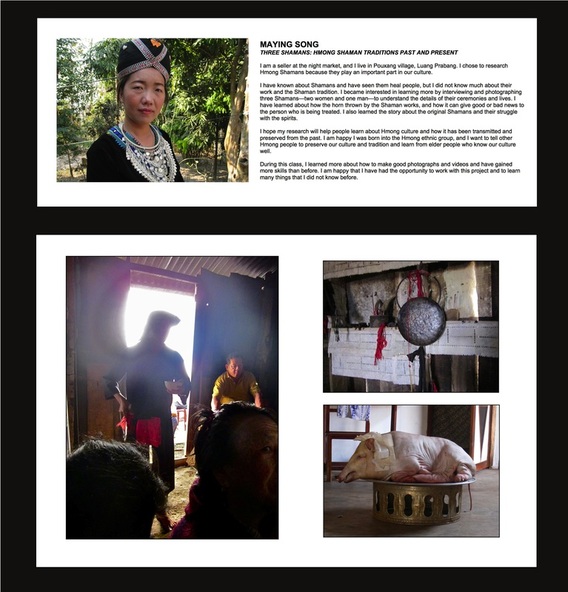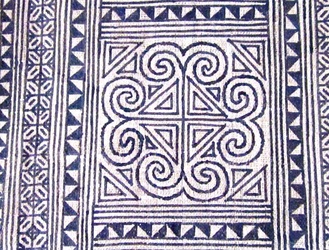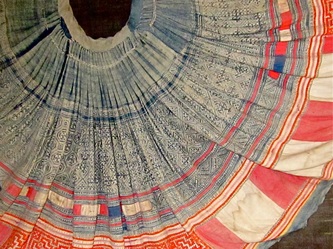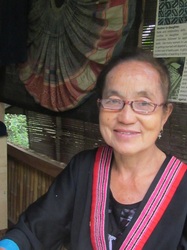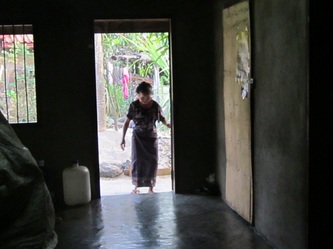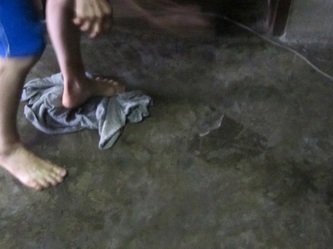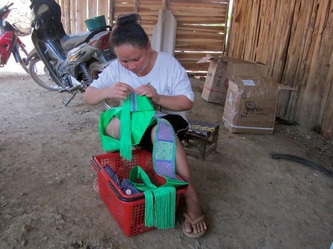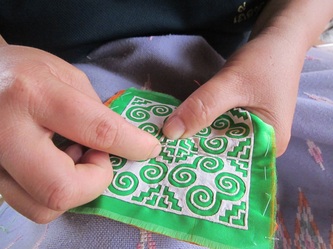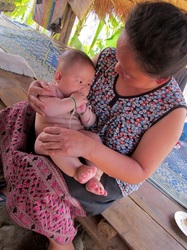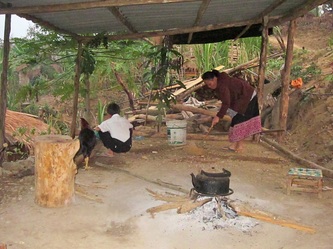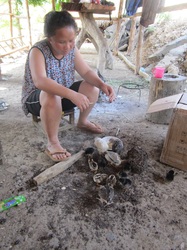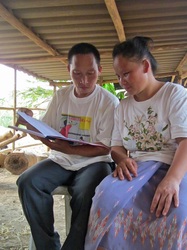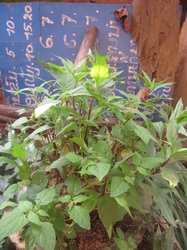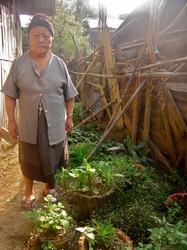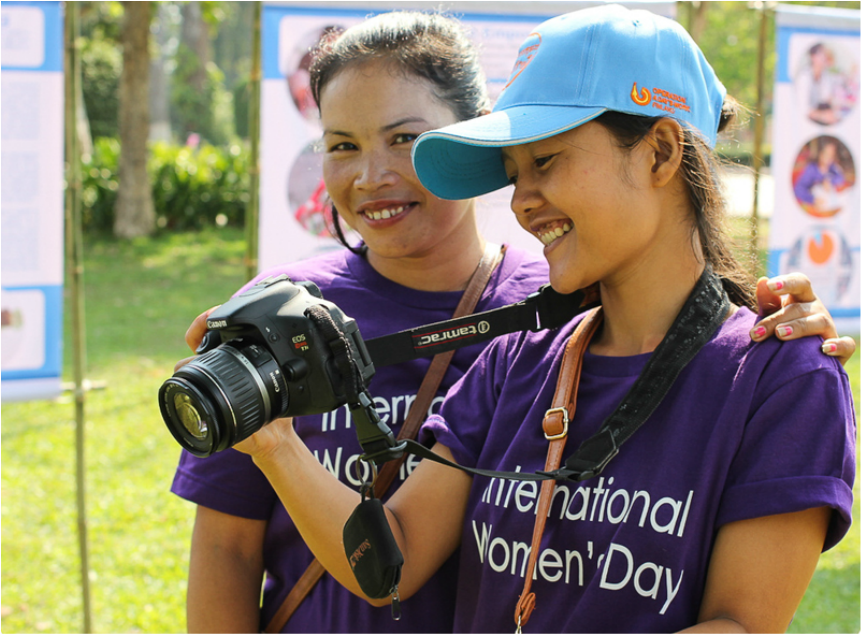|
Following the success of Stitching Our Stories, PhotoFoward and the Traditional Arts and Ethnology Center developed an advanced media research training program for a small team of women and girls who demonstrated an exceptional commitment to documenting their cultures and a keen interest in further developing their technical and creative skills.
Each of the research trainees--ranging in age from 14 to 35--selected an aspect of community life to explore through digital media and were trained in key aspects of ethnographic research, including documentary photography, film production, and community interviews. Their subjects ranged from the ancient shamanic tradition to childcare traditions to the disappearing craft of Hmong batik. Upon completion of the program, each trainee gained a paid position at the museum as a TAEC Community Researcher or a PhotoForward scholarship and TAEC Internship. Their ongoing work has become part of TAEC's permanent cultural archive and are featured in the current exhibition at the museum: Caregivers to Culture Keepers: Stories from Women in a Changing Laos. Through their photographs, films, and interviews, these women and girls are contributing to the ongoing preservation of their cultural traditions and are uniquely capable of capturing intimate and moving portraits of communities in transition. |
|
MAI YING SONG
|
|
|
I am a seller at the night market, and I live in Pouxang village, Luang Prabang. I chose to research Hmong Shamans because they play an important part in our culture.
I have known about Shamans and have seen them heal people, but I did not know much about their work and the Shaman tradition. I became interested in learning more by interviewing and photographing three Shamans—two women and one man—to understand the details of their ceremonies and lives. I have learned about how the horn thrown by the Shaman works, and how it can give good or bad news to the person who is being treated. I also learned the story about the original Shamans and their struggle with the spirits. I hope my research will help people learn about Hmong culture and how it has been transmitted and preserved from the past. I am happy I was born into the Hmong ethnic group, and I want to tell other Hmong people to preserve our culture and traditions and learn from our elders who know our culture well. |
BAO SONG
Hmong Batik and the Life and Work of Ms. Xue Xiong
|
|
I sell handicrafts at the night market, and I live in Ma Village, Luang Prabang. The subject of my research is Ms. Xue Xiong from Nasamphan, Luang Prabang, who is an expert in traditional Hmong batik.
The reason I chose to research Hmong batik and Ms. Xue Xiong is because it is an interesting part of Hmong identity and there are few people left who are skilled in this traditional craft. Ms. Xue Xiong is getting old and is not sure how long she will be alive in this world. I have never seen anyone draw the batik as good as her, and there does not seem to be anyone interested in learning from her or carrying on the tradition. I am worried about this craft, because if Ms. Xue Xiong passes away, the Hmong community may lose an important part of their culture. I have learned many things since we started this project, and I am very happy and proud to be part of it. I hope my work will make people more interested in Lao and Hmong culture. I am very proud to be Hmong and am happy that I was born in Laos and to be Lao. I want all Hmong people to love Laos and for everyone to love your own ethnic group. |
PASONG LEE
My Mom and the Tradition of Hmong Embroidery
|
|
I am 14 years old and am currently in high school. My research subject is about my mom and her life, her embroidery, and many of the things she knows about Hmong culture. The reason I chose my mom to be a subject is because she is very important to me and she has lived an interesting life. She has taken care of me since I was born, and works hard to send me to study.
I have learned many things about my mom through this project. I know more about her story and how she learned traditional Hmong embroidery. This skill has been transmitted from generation to generation; my great grandmother taught my grandmother and she taught my mom and my mom taught me. I am going to teach my younger sister too. I hope people will learn about my mom’s life and our family. I also hope that the work that I did will make people interested in Hmong culture and want to learn to embroider. I am very happy to be Hmong and to have such a good mom. |
SIA YANG
Kawm Thaub Duab: Traditional Medicine Woman
|
|
I sell handicrafts at the night market, and I live at Kuangtinoung village. The subject of my project is a woman who makes traditional Hmong herbal medicine and the importance of this craft in Hmong culture. The reason I chose this subject is because only elderly people have the skill of using herbs and making medicine and young people, like myself, are interested and would like to learn too.
I hope people will learn more about Hmong culture and tradition from my project. I also hope they have a better understanding of the different kinds of traditional medicines that the Hmong use to cure people and about the life of the medicine woman who is featured in my photographs and video interviews. From my research, I have learned about many kinds of traditional Hmong herbs medicines and how each herb cures diseases. If tourists and visitors are interested in learning more, they are welcome to ask me. I am very happy to have been born as a Hmong woman and even though we are from different ethnic groups such as Hmong, Lao, and Kmhmu, we all love each other. |



